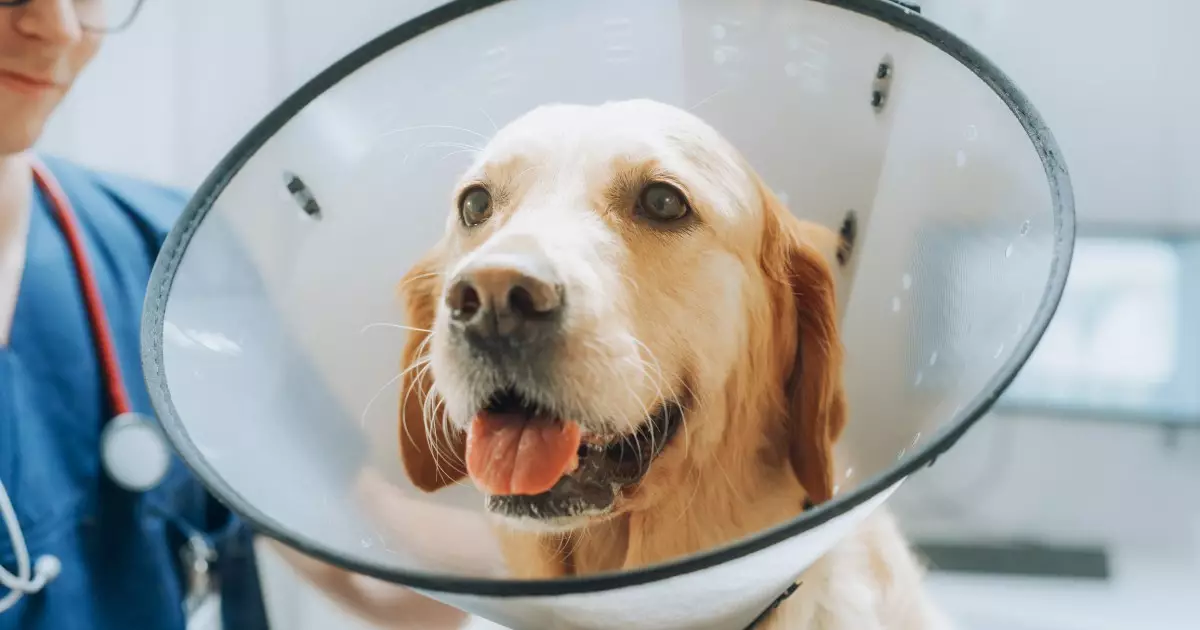Neutering a male dog is not just a common veterinary practice; it’s a critical decision that impacts the health, behavior, and overall well-being of your pet. Often referred to as the “big snip,” this procedure involves the surgical removal of a dog’s testicles, rendering him incapable of reproducing. Beyond population control, there are various benefits associated with neutering that deserve careful consideration.
Neutering is a relatively straightforward surgical process usually performed under anesthesia. The veterinarian makes an incision to access the testicles, cutting the cords and removing the organs through this opening. As a result, the recovery process involves stitches that might require removal after several days. Some dogs may also wear an Elizabethan collar, commonly known as the “cone of shame,” to prevent them from licking the surgical site during recovery. The healing process typically takes about two weeks, after which your dog can return to his regular activities and lifestyle.
It’s crucial for dog owners to understand the importance of this procedure in preventing pet overpopulation. Shelters around the nation face overwhelming numbers of dogs that are euthanized due to a lack of homes. By neutering your dog, you are playing an active role in reducing this unfortunate reality.
One of the most compelling reasons to consider neutering is the significant health benefits associated with the procedure. According to various studies, neutered male dogs are less likely to develop certain serious health issues, such as testicular cancer and various prostate diseases. This protection against disease can contribute to a longer and healthier life.
Moreover, neutering can result in a change in behavior that contributes to better adaptability in social settings. After the procedure, dogs tend to exhibit less aggressive behavior and are less prone to roaming. This reduction in testosterone levels can minimize dominance-related behaviors like marking territory or humping, which can be particularly advantageous in multi-dog environments.
It’s important to note that while neutering can reduce certain behaviors, it does not eliminate them entirely. For instance, mounting behavior may still occur as a result of learned behavior or social dominance rather than sexual instincts.
Pet owners often grapple with the timing of neutering their dogs. Historically, veterinarians recommended waiting until a dog reached puberty, around six months of age. However, recent studies suggest that neutering before puberty can influence a dog’s growth, making them slightly larger due to the role of testosterone in bone development. Owners should consult with their veterinarian to determine the most appropriate timing based on the dog’s age, breed, and health status.
Additionally, conditions like cryptorchidism, where one or both testicles do not descend, necessitate neutering. This condition is associated with a higher risk of testicular tumors, making it imperative that affected dogs undergo the procedure.
While there are benefits to neutering, it’s important to recognize the associated risks. Older dogs or those with pre-existing health issues may face a higher risk of surgical complications. However, these risks can often be mitigated through proper veterinary evaluation, including pre-surgical blood work to assess the dog’s overall health.
After the neutering procedure, pet owners should be prepared for their dog’s recovery phase. Many dogs can return home the same day as surgery, but their energy levels might be lower than usual for a few days. Expect some nausea and appetite changes; it’s not uncommon for dogs to refuse food right after the surgery. It’s vital not to force them to eat if they are not interested.
Monitoring the surgical site for swelling and restricted activity is crucial in the initial recovery days. Swelling is a common occurrence and often results from licking or scratching the incision site. If a collar is required to prevent licking, be diligent in ensuring your dog wears it, even during sleep.
Pet owners should keep an eye out for signs of infection or complications, such as excessive redness, discharge, or if the dog appears to be in continuous pain. Follow-up care is also essential, with veterinary check-ups to ensure the incision heals properly and any stitches are safely removed.
Neutering your male dog is a significant and responsible decision that contributes to both the health of your pet and the larger issue of pet overpopulation. The benefits of the procedure extend beyond procreation prevention and include crucial health and behavioral benefits that can enhance the quality of life for dogs and their owners alike. By ably navigating the neutering process—from understanding the surgical procedure, managing recovery, and consulting with veterinary professionals—pet owners can ensure they are making the best possible choice for their furry companions.


Leave a Reply